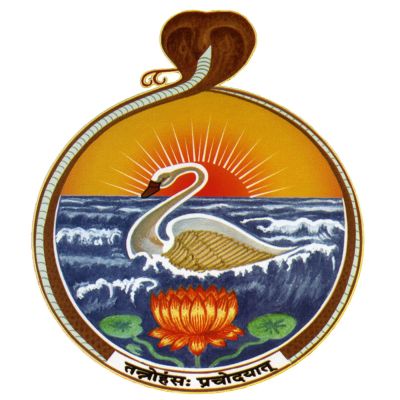Swami Tattwamayananda’s class on Srimad Bhagavad Gita is held at the Vedanta Society of Northern California, San Francisco (founded by Swami Vivekananda in 1900) on Friday evenings in the First Universal Hindu Temple in the West (founded by Swami Trigunatitananda in 1905). Classes are held on Friday night at 7:30 pm. All are most welcome.The Srimad Bhagavad Gita is the most important spiritual classic of Hinduism.Swami Tattwamayananda, currently the Minister of the Vedanta Society of Northern California, San Francisco, (originally founded by Swami Vivekananda in 1900) served in various centers of the Ramakrishna Order in India as editor, publisher, and teacher of Sanskrit, Advaitic texts such as Sri Shankaracharya's commentaries on the 'Prasthanatraya' (the fundamental Sanskrit texts of Vedanta philosophy), Buddhism and Indian philosophy. He underwent traditional training in Hindu scriptures, Sanskrit, Vedic and Vedantic literature for many years, from his early days...
https://www.spreaker.com/show/srimad-bhagavad-gita_1
60 - Towards a Tranquil Mind | Swami Tattwamayananda
-6th chapter: verses 23, 24, 25, 26, 27
-The lecture was given by Swami Tattwamayananda on November 13, 2020.
-23rd verse: “The Yogi then reaches a state of severance from any feeling of incompleteness such as agony, pain and unhappiness. This is called duḥkha-sanyoga-viyogam”
-Every experience of happiness at the empirical level is only the temporary absence of unhappiness. We reach a state of permanent happiness with an evolved, steady and equanimous mind – when we look upon both happiness and unhappiness with a higher perspective, without attachment or aversion.
-So long as we look upon ourselves as the mind and body, we cannot have permanent happiness. When we identify ourselves as Atman, the transcendental reality, then we experience Brahmanandam – highest, permanent happiness.
-24th verse: “We should abandon all desires. Desires are born of sankalpa. This should be done by restraining our senses using the mind alone.”
-Sankalpa means brooding or thinking about worldly objects. Desires are created when we connect with worldly objects through the senses. The mind creates a false notion that we need them to be happy.
-Mind should be slowly lifted through healthy, sublime desires that are rooted in unselfishness - such as reading of scriptures, noble deeds, and holy association. This helps purify our samskaras and restrain the desire for worldly enjoyments.
-25th verse: “With the buddhi set in patience, with the mind linked to Atman, let the spiritual seeker try to attain to peace and quietude by degrees. He should not think of anything else.”
-Spiritual practices should be done with moderation to avoid delusions of the mind. Mind should be gradually liberated from the clutches of the senses. The senses should be liberated from the clutches of sense objects. The mind should be linked to Atman – it then becomes steady.
-26th verse: “When the restless mind wanders away, it should be brought back closer to Atman.”
-Mind is a continuous flow of thoughts. If the thought currents are conflicting, they manifest as restlessness and unsteadiness of the mind.
-Patanjali refers to the following obstacles, which cause the mind to wander - Disease, mental laziness, doubt, lack of interest, sloth, clinging to sense pleasures, false perception, lack of concentration, and unsteadiness in concentration.
-Atman is steadiness, bliss itself. Mind should be brought closer to Atman by feeding it with ideas that remind one of his true identity as Atman. Then the distractions of the mind slowly disappear and it becomes tranquil.
-27th verse: “Mind becomes calm like an ocean with all waves completely subsided. When the mind identifies itself with the Atman, supreme bliss comes to the Yogi. His mind becomes serene, all his passions are gone, and he becomes free from all disturbances.”
-The first step is to free the mind from the clutches of the senses. Then the mind becomes pure and slowly gets directed towards Atman. Then Avarana (veil that conceals our true identity) and Vikshepa (false projection) disappear.
-At such a stage, the mind is free from distractions caused by Rajo and Tamo guna. A jeevan mukta has such a mind – such a Yogi thinks that everything is Brahman.
-One can look at the ocean in two ways. One way is to look at it as disturbed with waves and currents. Another is to look upon the waves and currents as constituted by the same water that constitutes the ocean – they emerge, exist and dissolve in the ocean. The Yogi who looks upon everything as Brahman is like the person who sees the same water in waves, currents and ocean.
